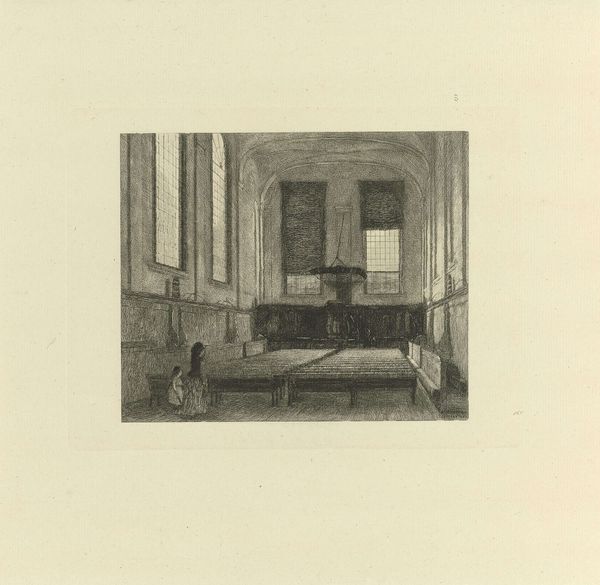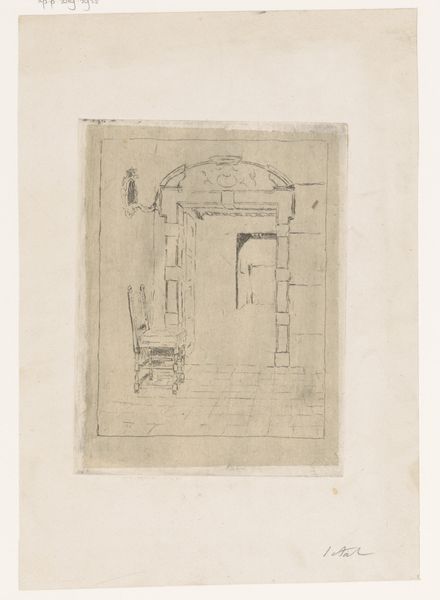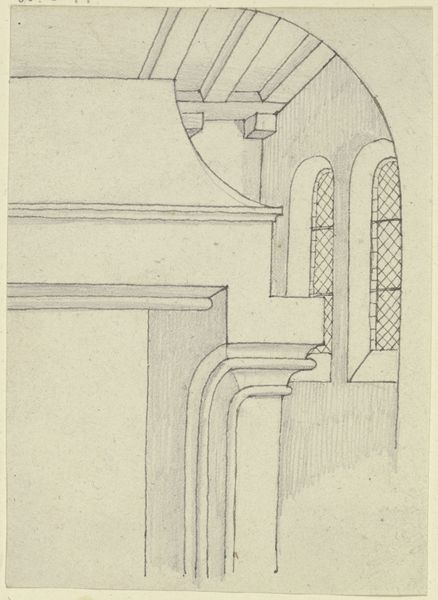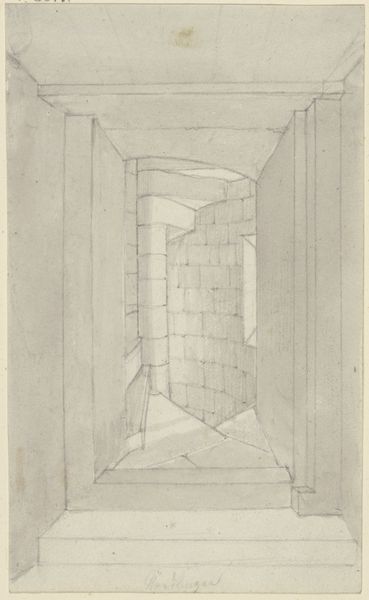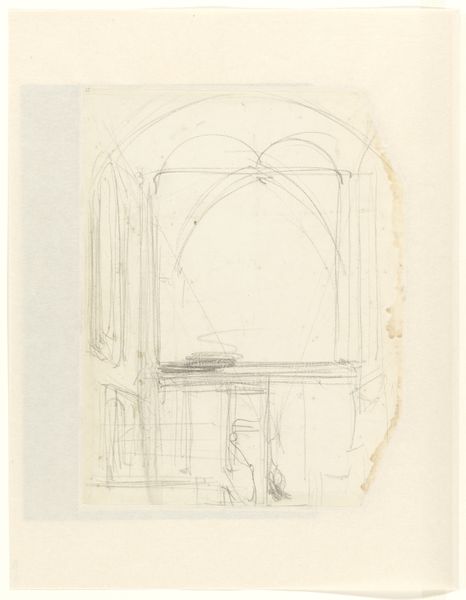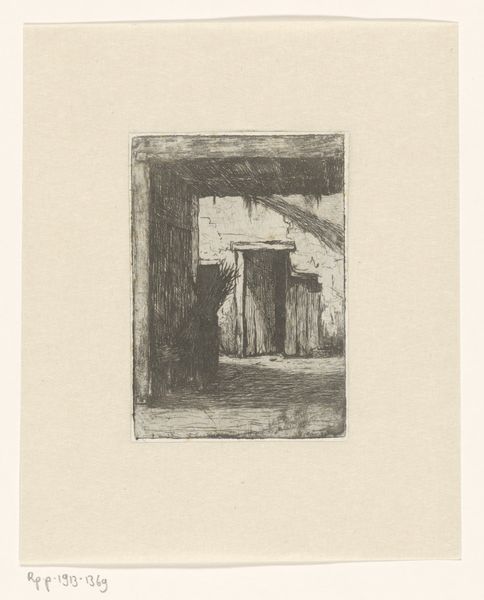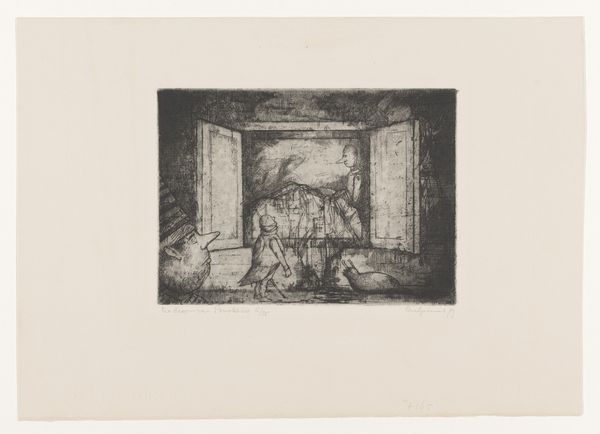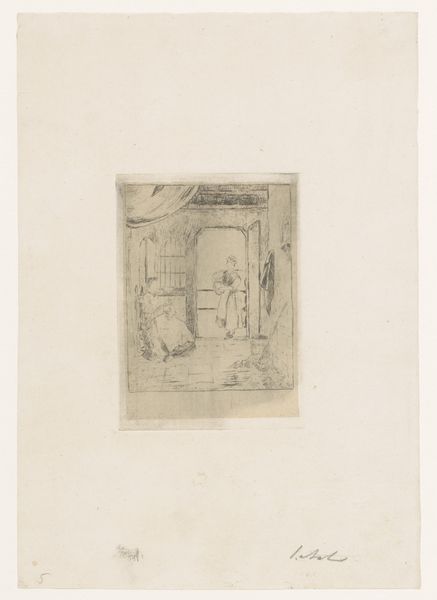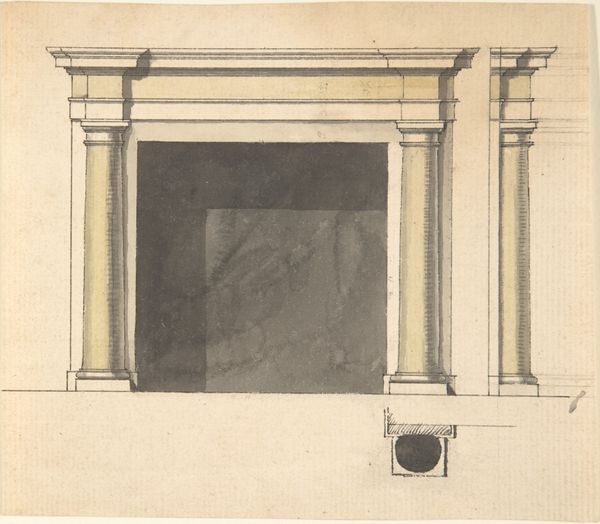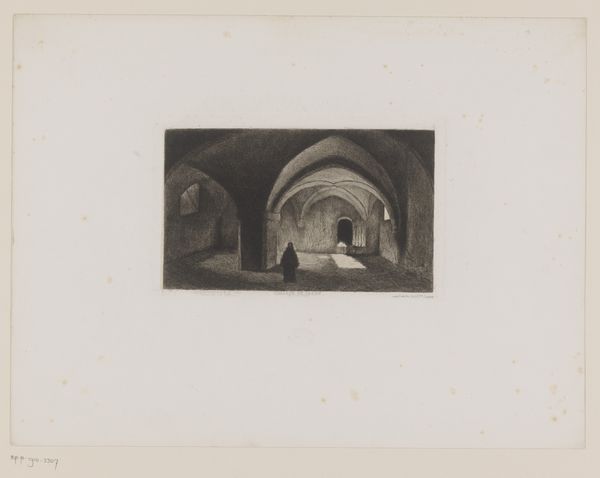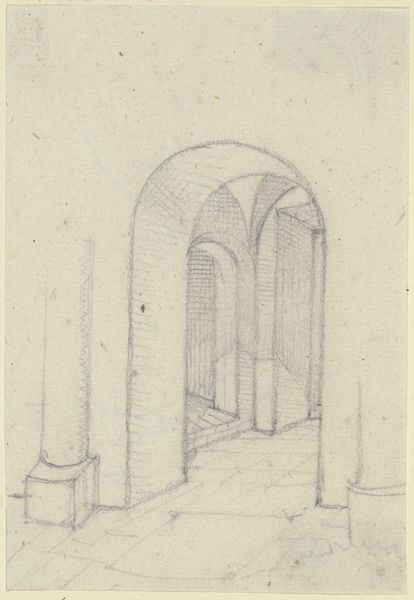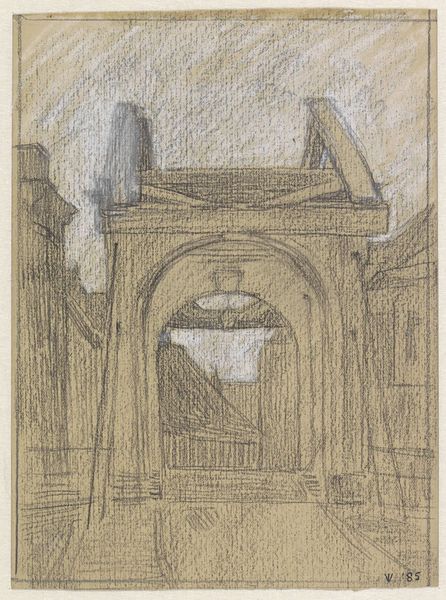
drawing, paper, ink, pencil, architecture
#
drawing
#
paper
#
ink
#
geometric
#
pencil
#
cityscape
#
architecture
Copyright: Public Domain
Curator: This intriguing drawing, titled "Architecture," is by Karl Ballenberger. It's rendered in pencil and ink on paper. What strikes you most about it initially? Editor: The sparseness. It's like a stage set, almost theatrical. The geometric rigor clashes intriguingly with the suggestion of a deeper space, maybe even a kind of eternity. It's more skeletal than substantial. Curator: Precisely. Ballenberger seems to strip architecture to its barest symbolic bones here. The archway is a powerful motif—traditionally signifying transitions, portals to the sacred, passages between worlds. Even the shape of the little triangle could be read as an invocation of classical orders, the suggestion of a pillar's base. Editor: Absolutely. Those arches carry an enormous weight in art history, both practically and symbolically. However, notice the use of line—it's tentative, almost exploratory, which destabilizes any definitive reading. He's exploring volume, not defining it, allowing the void equal importance as the visible structures. The flatness created by this lack of heavy line emphasizes its artifice. Curator: That intentional ambiguity is so critical, isn't it? It resists a singular interpretation, forcing us to bring our own architectural memories, our personal mythologies of space to the image. Do these chambers offer safety or entrapment, open vistas, or claustrophobic constriction? The answers shift depending on one’s experiences. Editor: Indeed. Look, too, at how the planes don't quite align, creating a subtle disjunction, almost an impossible space like an Escher drawing. It undermines any notion of perfect architectural order and pushes us toward psychological interpretations. I think that’s Ballenberger emphasizing a deeper idea, making this an architectural rendering for the mind. Curator: Yes, it seems this piece reveals as much about psychological architectures as about physical ones, the shapes of memory, the lines of feeling we construct and inhabit. The space in our minds, too, which either limits or opens us. Editor: A perfect synthesis, then, of form and symbolic suggestion. An image that lingers long after we've stopped looking.
Comments
No comments
Be the first to comment and join the conversation on the ultimate creative platform.
